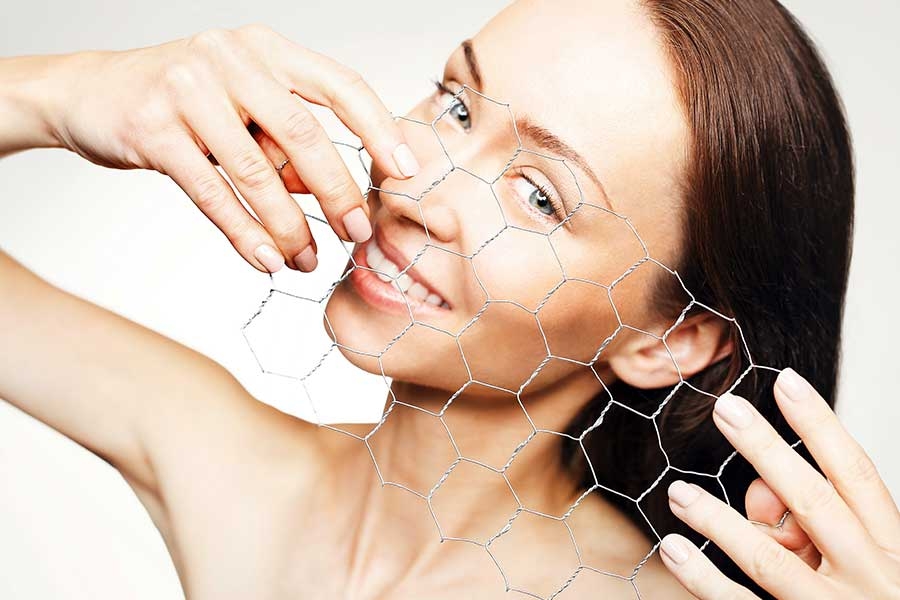Bioactive Peptides: Superior Antioxidants
Written by Susan Wade, M.Ed., L.S.Free radical damage has been a popular topic with numerous research articles since the late 1800s, but little is known about bioactive peptides playing a superior role as an antioxidant. This article will address the causes of free radicals, reactive oxygen species (ROS), oxidative stress, and the damage that occurs to cells that contribute to accelerated aging and many other skin conditions.
FREE RADICALS
Let’s begin by examining how oxygen is used for energy. During the cellular respiration process, cells utilize oxygen for energy production during the electron transport system. Chemical bonds are broken and energy from electrons is produced. Electrons thrive when paired with other electrons. When they become detached, they are considered unstable and immediately begin to scavenge for electrons to pair with. This is why they are referred to as free radical scavengers. It is important to note that when these single electrons are unattached, they become unstable and highly reactive, which causes inflammation and subsequently influences cell growth. Unpaired, highly reactive electron atoms are referred to as free radicals or reactive oxygen species.1
During this cycle of free radical destruction, oxidative stress or reactive oxidative species (ROS) is generated. ROS is a term used interchangeably with free radicals. This damage causes energy depletion, preventing controlled apoptotic death and causing the cell to simply fall apart.2 According to the authors of “Free Radicals and Extrinsic Skin Aging,” each human cell receives 10,000 ROS hits per day, which equals 7 trillion insults per second per person.3 Under severe levels of oxidative stress, necrosis or cellular death occurs. Free radical damage is considered an imbalance between free radicals, ROS, and an antioxidative defense.
Additionally, the body uses free radicals in other areas. Free radicals are produced almost as a toxic waste by the mitochondria as oxygen is used to create energy. The immune system creates the same destructive types of free radicals but uses these radicals to kill bacteria and viruses. In the process of destroying these unwanted agents, large quantities of free radicals are spilled in the process.4 Therefore, free radicals have constant access to more partners and the destructive chain reaction continues to cells.
BIOACTIVE PEPTIDES
How do bioactive peptides become superior antioxidants? The mitochondrion is the powerhouse of the cell, producing energy. Bioactive peptides are able to accept electrons, then transport the energy into adenosine triphosphate (ATP) through the electron transport system. As electrons search for electrons, the peptides become an integral part of preventing free radical formation. Depletion of the mitochondria results in increased ROS and apoptosis.
In the past, antioxidants such as vitamins C and E have been considered the standard and, sometimes, the only answer to combat free radical damage. However, a peptide known as glutathione has a strong antioxidant quality. Glutathione has the ability to donate electrons, therefore, meeting the requirement of the unattached electron.5 This peptide is considered a tripeptide because it is composed of three amino acids: cysteine, glycine, and glutamate. There is strong evidence that glutathione depletion causes cell death.5 Other research supports that the depletion of this intrinsic peptide increases vulnerability to free radical damage.6
In summary, each cell in the body has the potential of having over one hundred mitochondria. Understanding how free radicals are produced helps us to understand the power of bioavailable peptides as a superior antioxidant. Bioactive peptides such as cysteine, glycine, and glutamine forming glutathione provides superior defense against oxidative stress and free radical damage.
References
1 Kresser, C. “What Really Causes Oxidative Damage?” Kresserinstitute.com. June 2018.
2 Gilgun-Sherki, Y., E. Melamed, and D. Offen. “Oxidative stress induced-neurodegenerative
diseases: the need for antioxidants that penetrate the blood brain barrier.”
Neuropharmacology 40 (2001): 959-975.
3 Poljsak, B. and R. Dahmanc. “Free Radicals and Extrinsic Skin Aging.” Dermatology
Research and Practice (2012).
4 Barrett-Hill, Florence. Advanced Skin Analysis. Virtual Beauty Corporation, 2004.
5 Li, Y., P. Maher, and D. Schubert. “A role for 12-lipoxygenase in nerve cell death caused by
glutathione depletion.” Neuron 19, no. 2 (1997): 453-463.
6 Pellmar, T.C., D. Roney, and D.L. Lepinshki. “Role of glutathione in repair of free radical
damage in hippocampus in vitro.” Brain Research 583, no. 1-2 (1992):194-200.
 Susan Wade is a licensed aesthetician joining Viktoria De’Ann in 2015 as the director of education and sales after being in the health and education industry for over 18 years. She has a master’s in higher education administration and enjoys sharing her wealth of knowledge with physicians, clinicians, and students nationwide. Wade has a diverse background beyond aesthetics as a college instructor in kinesiology and business and is an owner of a successful sports conditioning business’ and a nutrition coach. Her passion lies in understanding the complexities of physiology, nutrition, and biology and in educating practitioners on how to incorporate these areas to reach better solutions and successful results with their clients.
Susan Wade is a licensed aesthetician joining Viktoria De’Ann in 2015 as the director of education and sales after being in the health and education industry for over 18 years. She has a master’s in higher education administration and enjoys sharing her wealth of knowledge with physicians, clinicians, and students nationwide. Wade has a diverse background beyond aesthetics as a college instructor in kinesiology and business and is an owner of a successful sports conditioning business’ and a nutrition coach. Her passion lies in understanding the complexities of physiology, nutrition, and biology and in educating practitioners on how to incorporate these areas to reach better solutions and successful results with their clients.
